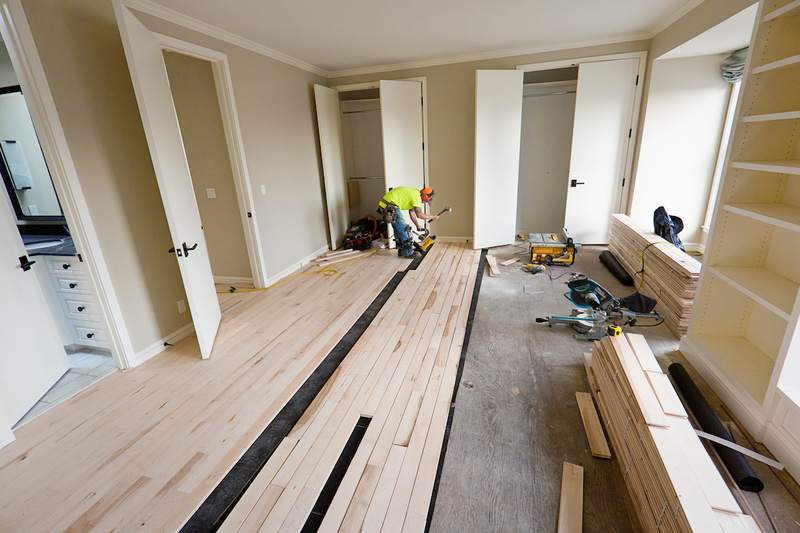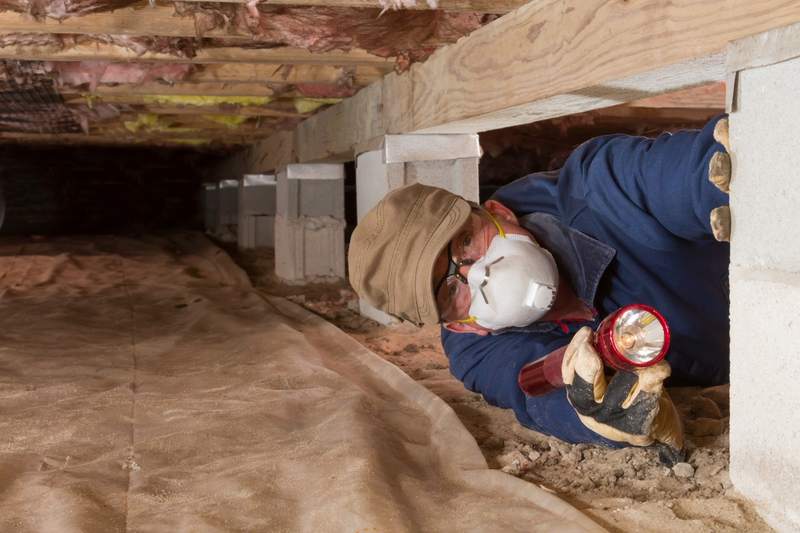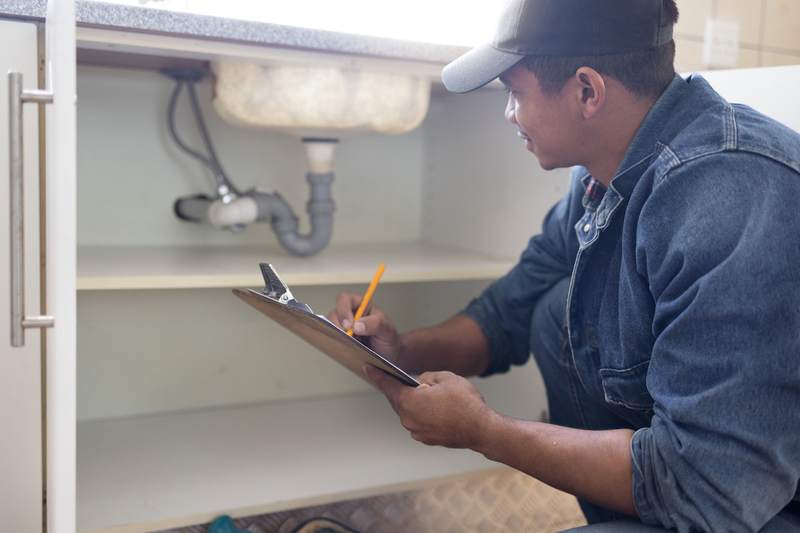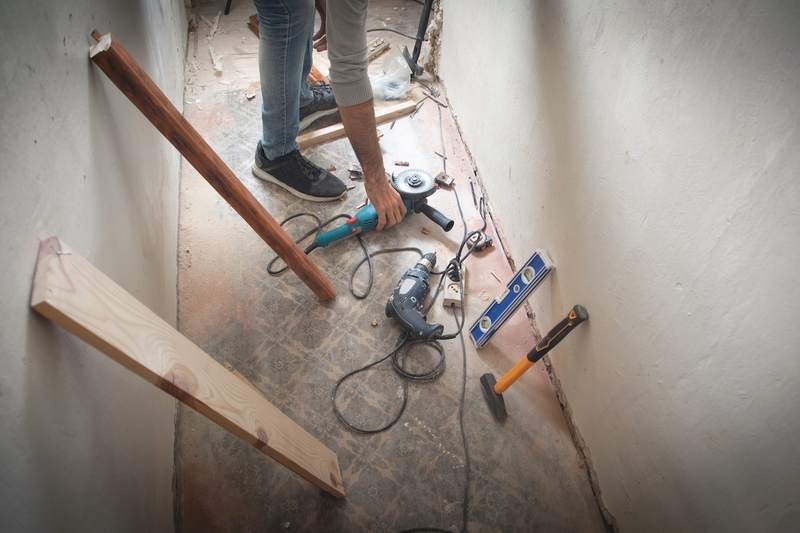
Purchasing a fixer-upper home is a major decision that requires buyers to weigh the pros and cons before committing to the time, effort, and expense such a property requires. But if you’re ready to take on a fixer-upper, you’ll first need to find one, and then you’ll need a mortgage to buy it with.
Finding Fixer-Upper Homes To Buy
A real estate agent can help you find homes that meet your fixer-upper criteria. An agent could help you sort through listings, since home descriptions might not always make it clear just how much work a property may need.
You also can search neighborhoods you’re interested in living in for fixer-upper candidates, and see if the owner is interested in selling.
How To Budget For a Fixer-Upper Home
Here are five steps you can take in advance and during the purchase process to successfully budget for your fixer-upper home, and the repairs and renovations it needs.
1. Get an inspection
A home inspection will reveal in detail which repairs the property needs.
“When getting an inspection for a fixer-upper, it’s crucial to hire a professional home inspector with experience with renovation projects,” says Warner Quiroga, a real estate investor with Prestige Home Buyers, based on Long Island, New York. “They will thoroughly assess the property.”
2. Decide what you can do yourself
If you know you can tackle projects on your own, you’ll save money in the long run. But be realistic about your skill level, patience, and the amount of time you have on your hands.
3. Get quotes from contractors
Many contractors will come out to inspect a property and give you a free estimate. Get multiple estimates, and be sure to ask about timelines — including when they’d be able to begin work, and when they expect to complete it.
4. Determine which permits you need
Building permits often are required for renovations on a structure, and which permits you need will vary by location. Your contractor usually can help you with the permit process.
5. Be ready for unexpected expenses
Setting aside funds for unexpected issues is a must because renovation costs tend to increase, especially in older homes. Your lender may require you to set aside a contingency of 10% to 20% of your renovation loan amount to pay for unexpected expenses.
Loan Options for Buying a Fixer-Upper Home
When it comes to how to finance a fixer-upper, there are several loan options available. Some combine renovation costs with the home cost so that you’re taking out one fixer-upper mortgage.
Requirements for Loans To Buy and Renovate a Fixer-Upper
| Loan Type | Requirement | Comment |
| FHA 203(k) loans | Minimum down payment | 3.5%. |
| Minimum credit score | 580 with 3.5% down, or 500 to 579 with 10% down. | |
| Loan amount | Up to 110% of the value of the home after repairs are completed, or 100% of the home’s cost plus repairs and fees. | |
| Renovation amount | Minimum of $5,000 for standard 203(k) loans, or a maximum of $35,000 for limited 203(k) loans. | |
| Restrictions on construction | Contractors and projects must be approved. No DIY projects. | |
| Mortgage insurance | Required. | |
| Contingency reserve | Up to 20% of the cost of repairs. | |
| VA renovation loan | Minimum down payment | None. |
| Minimum credit score | None. | |
| Loan amount | Up to 100% of the estimated final home value after repairs, or enough to buy the home. | |
| Renovation amount | No limits set on the amount borrowed for renovations. | |
| Restrictions on construction | Department of Veterans Affairs-approved contractors and projects. | |
| Mortgage insurance | Not required. | |
| Contingency reserve | Up to 15% of the cost of repairs. | |
| Fannie Mae HomeStyle Renovation loan | Minimum down payment | 3%. |
| Minimum credit score | 620, though a score of 680 or higher will reduce the interest rate on the loan. | |
| Loan amount | Must adhere to the conforming loan limits. | |
| Renovation amount | The cost of the home, and up to 75% of the home’s estimated worth after renovations. | |
| Restrictions on construction | Contractors will need to agree with Fannie Mae’s payout for their work. | |
| Mortgage insurance | If your down payment is less than 20%, you’ll pay for private mortgage insurance. | |
| Contingency reserve | Lower cash requirements than other loan options. | |
| Freddie Mac CHOICERenovation loan | Minimum down payment | 5% (comes as a package combined with Home Possible, HomeOne, HFA Advantage, and super conforming mortgages). |
| Minimum credit score | Freddie Mac has no requirement, but lenders typically require a credit score of at least 660, if you put down less than 25%. | |
| Renovation amount | 75% of the lesser of the purchase price plus the cost of renovations, or the estimated value of the home with completed repairs. | |
| Restrictions on construction | Can be used to repair or prevent damage from natural disasters, for outdoor leisure spaces like pools, and for energy-efficient upgrades. | |
| Mortgage insurance | Putting down less than 20% means you’ll need PMI, but you can drop it once you have 20% equity in your home. | |
| Contingency reserve | Between 10% and 20%. | |
| Freddie Mac CHOICEReno eXPress loan | Minimum down payment | Financing is packaged with Freddie Mac’s Home Possible and other conventional, low down payment options. |
| Minimum credit score | Freddie Mac has no requirement, but mortgage lenders typically require a credit score of at least 660, if you put down less than 25%. | |
| Renovation amount | These are smaller-scale loans, so up to 10% or 15% of the home value, depending on location. | |
| Restrictions on construction | Can be used to repair or prevent damage from natural disasters, for outdoor leisure spaces like pools, and for energy-efficient upgrades. | |
| USDA renovation loan | Minimum down payment | None. |
| Minimum credit score | 620. | |
| Loan amount | Up to 100% of the anticipated value of the home after renovations. | |
| Renovation amount | Up to $35,000 in repairs, or more if structural updates are needed. | |
| Restrictions on construction | The U.S. Department of Agriculture’s list of eligible loan costs is long and includes updates to septic tanks and existing amenities. | |
| Contingency reserve | 10% or 15%, depending on whether the home has utilities on or off. |
Additional Financing Options
Here are a few other ways to finance repairs and renovations when you buy a fixer-upper.
Down payment and closing costs assistance programs
Many municipalities have programs that offer grants or low-interest loans to first-time homebuyers who need help affording a down payment or closing costs on a home. These programs vary widely by location, so it’s important to research what’s available in your area.
Personal loans
Personal loans are unsecured loans that typically are paid out as a lump sum and repaid with a fixed interest rate in installments over two to five years. The payments on a personal loan would be in addition to your monthly mortgage payments. Personal loans typically let you borrow up to $45,000, and carry a higher interest rate than a mortgage.
“While they may come with higher interest rates and shorter terms, they offer quick access to funds and greater flexibility,” says Brett Johnson, a real estate broker and professional homebuyer in Englewood, Colorado.
Credit cards
Credit cards are a flexible financial tool, but they typically come with high interest rates that can make using them expensive and difficult to pay off. One way to avoid this is to get a card with a low introductory rate, and plan to pay it off in full before that rate expires.
Home equity loans
If you already own property, a home equity loan offers low interest rates and tax benefits. The amount you borrow is paid to you in a lump sum, and you repay it over time on a fixed schedule on top of your monthly mortgage payment.
Home equity lines of credit
Similar to a home equity loan, a HELOC lets you use your home equity as a line of credit. You can borrow and repay the funds as needed, similar to a credit card. However, unlike a credit card, a HELOC is secured by your home, which means you can typically access larger loan amounts and lower interest rates.











